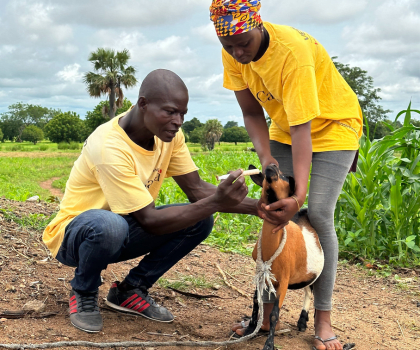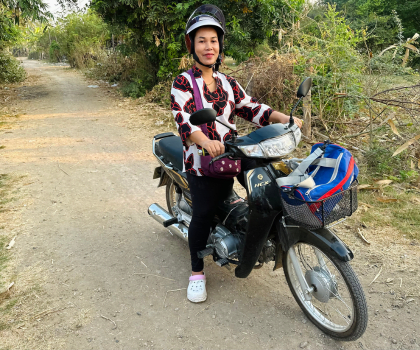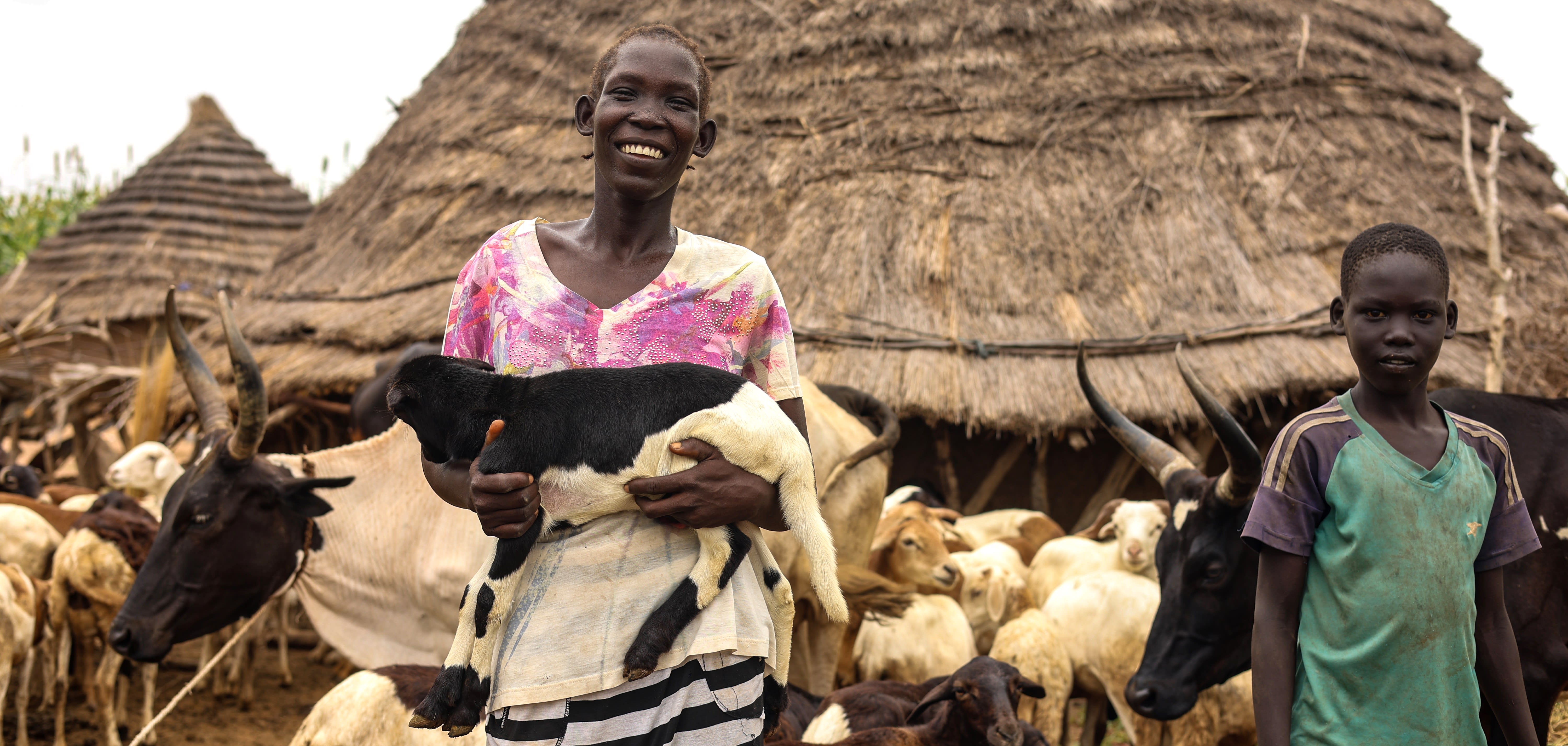Written by Tanja Kisslinger (Director of Communications, VWB), this blog is published in recognition of World Antimicrobial Resistance (AMR) Awareness Week. Special thanks to Vétérinaires Sans Frontières (VSF) Germany for sharing their "CAHW Training Manual on AMR in Poultry" and enabling us to share its valuable insights.
Antimicrobial Resistance: A Global Threat Demanding Local Solutions
Antimicrobial resistance (AMR) is a critical global health threat that could lead to 10 million deaths annually by 2050, according to the World Health Organization (WHO). This crisis is particularly acute in low- and middle-income countries, where limited access to veterinary services and the unregulated use of antibiotics exacerbate the problem. In rural communities, Community Animal Health Workers (CAHWs)—local livestock keepers trained in basic veterinary practices—play a vital role in preventing the misuse of antibiotics and ensuring the health of livestock, including poultry.
To address the growing challenge of AMR, Veterinarians Without Borders (VWB) and Vétérinaires Sans Frontières (VSF) International have made it a priority to empower CAHWs across Africa and Asia with the skills they need to manage livestock health responsibly. CAHWs are equipped with the knowledge to deliver essential veterinary services, promote proper antibiotic use, and educate their communities about responsible animal healthcare. This training bridges the gap in areas where formal veterinary care is scarce and helps prevent the overuse of antibiotics, which is a leading cause of AMR.
Moreover, by collaborating with government veterinary services, VWB and VSF International ensure that CAHWs provide informed, community-based care that supports animal health and addresses the risk of AMR at the local level.
 PHOTO: VWB-trained CAHW in South Sudan.
PHOTO: VWB-trained CAHW in South Sudan.
 PHOTO: VWB-trained CAHWs in Ghana.
PHOTO: VWB-trained CAHWs in Ghana.
 PHOTO: VWB-trained Village AHW (VAHW) in Cambodia.
PHOTO: VWB-trained Village AHW (VAHW) in Cambodia.
Core Areas of CAHW Training on AMR in Poultry
To further strengthen the ability of CAHWs to combat AMR, VSF Germany, in collaboration with Uganda’s Ministry of Agriculture, developed a specialized CAHW Training Manual on AMR in Poultry. This practical, easy-to-use guide equips CAHWs with actionable steps to prevent, diagnose, and manage poultry diseases responsibly while minimizing antibiotic misuse.
Specifically, the manual is structured around six key training focus areas:

1. Infection Prevention and Biosecurity: One of the most important aspects of the training focuses on preventing infections before they occur. CAHWs are taught best practices in biosecurity, including maintaining clean poultry environments, proper feed and water management, and controlling visitors and equipment to minimize the introduction of pathogens. These preventative measures help reduce the need for antibiotics by minimizing disease outbreaks in the first place.
2. Accurate Disease Diagnosis: Misdiagnosis of poultry diseases can lead to improper use of antibiotics, fueling AMR. The manual emphasizes training CAHWs in accurate diagnosis of poultry diseases and understanding the difference between bacterial, viral, and other types of infections. This enables CAHWs to make informed decisions about when and when not to use antimicrobials.
3. Rational Antibiotic Use: CAHWs are educated on the judicious use of antibiotics, including guidelines on when antibiotics are truly needed, the correct choice of antibiotic, and proper dosage and administration. This helps reduce unnecessary antibiotic use, which is a major driver of AMR. The training also emphasizes observing withdrawal periods—the time required after antibiotic treatment before animals can be safely consumed—to ensure antibiotics do not enter the food chain through poultry products.
4. Waste Management and Antibiotic Disposal: The manual provides guidelines on the safe disposal of unused and expired antibiotics, as well as proper management of poultry waste, which can be a source of resistant bacteria. By preventing antibiotic residues from contaminating the environment, CAHWs can help slow the spread of resistant bacteria in soil and water systems.
5. Policy and Regulatory Frameworks: CAHWs are introduced to local policies and regulations governing the use of antibiotics in livestock, ensuring that they understand the legal framework for antibiotic use and the importance of following these guidelines to combat AMR. This includes awareness of licensed antibiotics, counterfeit drugs, and the importance of obtaining antibiotics from authorized sources.
6. Supervision and Continuous Learning: The manual also emphasizes the need for ongoing supervision and refresher training for CAHWs. Continuous learning ensures that CAHWs stay up to date with the latest techniques in poultry health management and AMR prevention. Regular supervision by veterinary professionals ensures that CAHW practices align with national and international standards for responsible antibiotic use.
By focusing on these key areas, the training empowers CAHWs to be effective frontline defenders against AMR in their communities.
Global Impact of CAHW Training Programs by FAO and WOAH
The effectiveness of CAHW training in combating AMR is demonstrated through global initiatives led by the Food and Agriculture Organization (FAO) and the World Organisation for Animal Health (WOAH). For example, an FAO pilot project in Cambodia reported a 39% decrease in the use of critically important antimicrobials in chicken farms after implementing CAHW training on prudent antimicrobial practices. The training focused on accurate disease diagnosis, biosecurity measures, and community education, resulting in improved animal health outcomes and reduced AMR risks.
Similarly, WOAH implemented programs in Uganda targeting veterinary paraprofessionals, including CAHWs, to promote responsible antimicrobial use. According to WOAH's report, there was a 28% reduction in antimicrobial usage in livestock sectors where CAHWs received specialized training. These programs not only reduced antibiotic misuse but also enhanced compliance with national regulations and increased awareness about AMR.
Overall, these efforts underscore the critical role of CAHWs in the fight against AMR and highlight the positive impact that well-structured training programs can have on both public and animal health.
Why CAHWs Are Crucial in the Fight Against AMR
Antimicrobial resistance is not only an animal health issue but also a global health crisis that threatens food security, public health, and economic stability. The One Health approach recognizes that the health of people is connected to the health of animals and our shared environment. By providing localized, community-based animal healthcare, CAHWs reduce the misuse of antibiotics and help prevent the spread of resistant bacteria. Their ability to act as a frontline defense in livestock care is critical to this holistic approach to health.
By empowering CAHWs with the skills to diagnose, treat, and prevent diseases in livestock, training programs like those developed by VSF Germany and VWB are making significant strides in combating AMR at the local level. These interventions not only protect animal health but also safeguard the broader food supply chain and the health of the communities that depend on it.
 PHOTO: A smallholder farmer and her son attend a vaccination campaign in South Sudan’s Aweil East, where VWB-trained CAHWs provide vital care to local livestock.
PHOTO: A smallholder farmer and her son attend a vaccination campaign in South Sudan’s Aweil East, where VWB-trained CAHWs provide vital care to local livestock.
Learn More
For more specific detail on how CAHWs can help combat AMR in poultry, read the full VSF Germany CAHW Training Manual. To learn more about the fight against AMR and the role of CAHWs, see:






